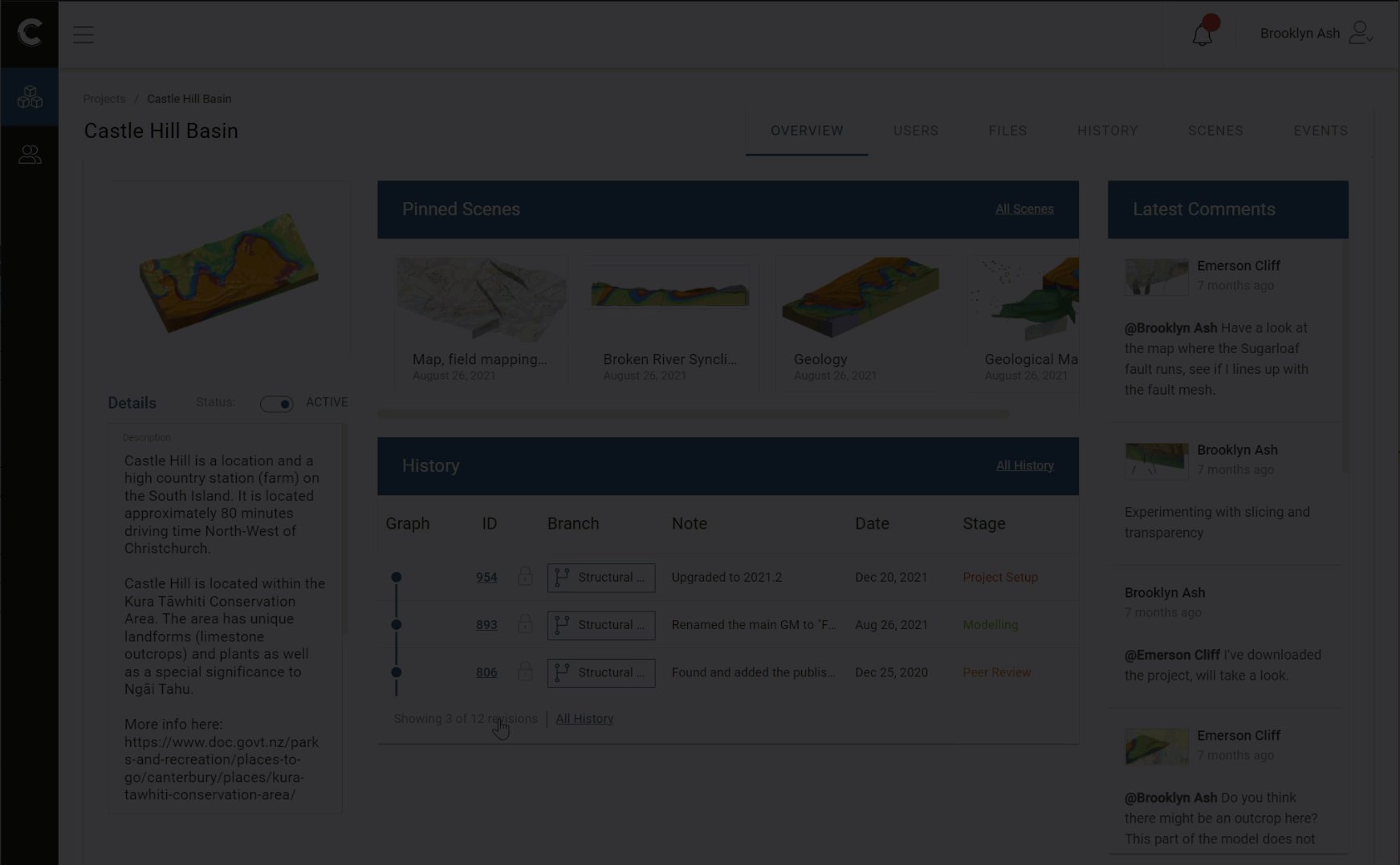Working with Projects in the Central Portal
This guide describes how Central projects are organised in the Central Portal. It is divided into:
- Displaying the Projects List
- Viewing Project Details
- Setting a Project’s Location
- Sharing a Project
- Removing Users From a Project
- Managing Project Revisions
- Unlocking Locked Branches
Projects, project branches and revisions are added to Central using Leapfrog. See New Central Projects in the Leapfrog Geo help
in the Leapfrog Geo help for more information.
for more information.
See Viewing the Project History in the Branching in Central Projects guide for information on navigating in the project history.
Displaying the Projects List
When you sign in to the Central Portal, the Projects grid view is displayed. This shows all the projects you have access to.
If a project you expect to see is not listed, contact your administrator to ensure you have been given access to the project.
The projects you have access to can be displayed in three ways: a grid view, a list view and a map view.
The grid view shows thumbnails of each project:

The list view displays what permissions you currently have for each project. Click on a link to view more information about the project.

The map view shows a map with a list the projects you have access to and location markers for projects to which an Admin has added location information. Click on a marker in the list to zoom in on a project’s location.

Clicking on a marker on the map displays the project’s thumbnail. Click on the thumbnail to view more information about the project.

In each view, you can search for projects by simply typing a project’s name in the Search Projects box to start narrowing down the list of possibilities. You can also filter your projects list by whether projects are active or inactive, by application and by permissions:
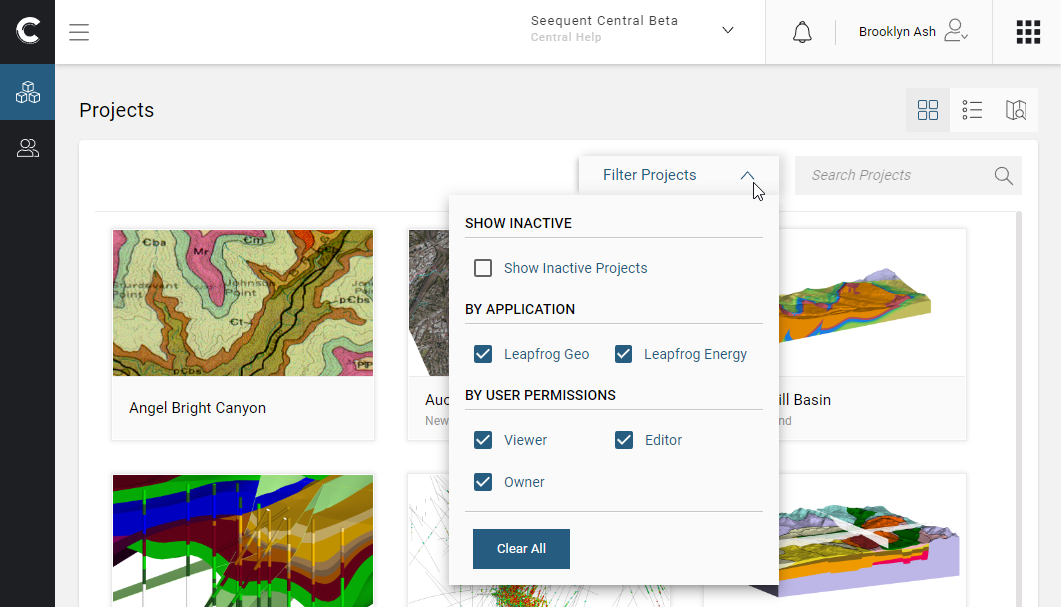
Inactive projects are projects an administrator has disabled access to for some reason. If you need to work in an inactive project, contact your administrator.
Viewing Project Details
To view a project’s details, click on a project in the Projects list. An overview of the project is shown:
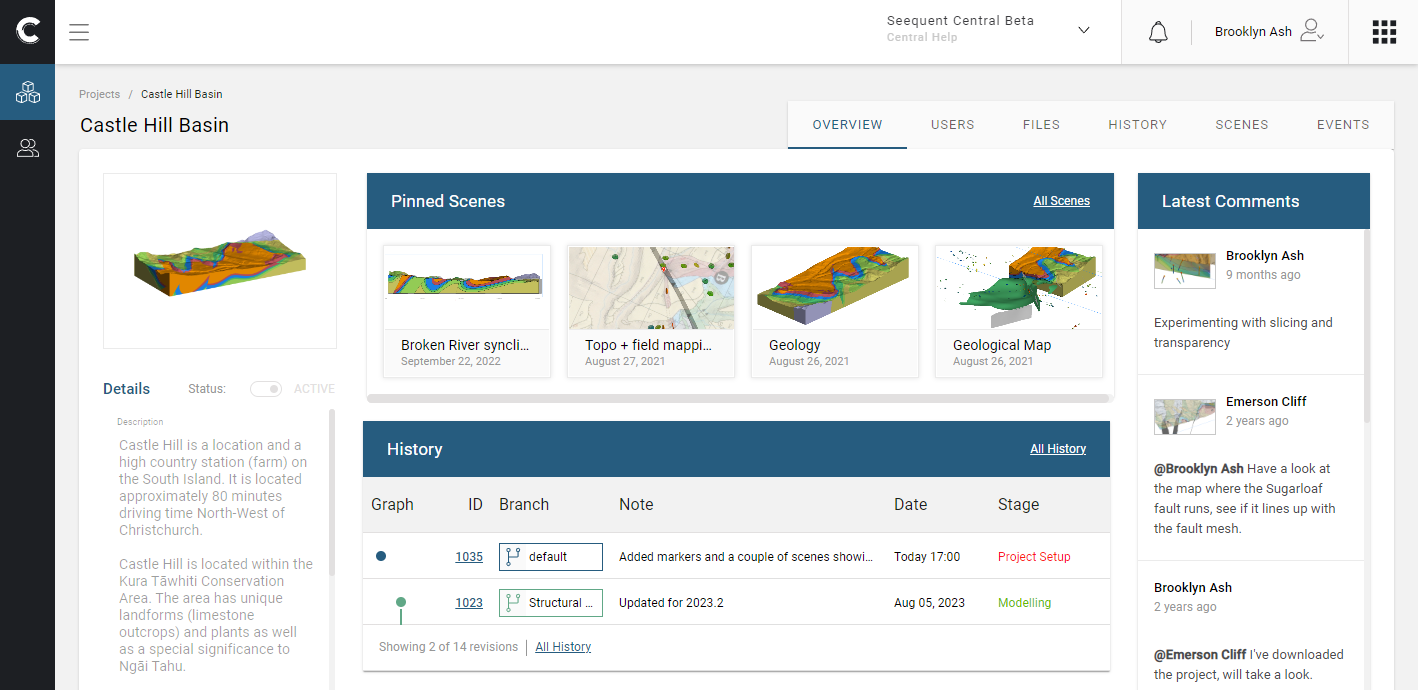
For more information about scenes and comments, see the Collaborating with the Team guide.
For more information about the project history, see the Branching in Central Projects guide.
For more information about the Files tab, see the Storing and Accessing Data in the Project Data Room guide.
The Events list shows all events relating to the selected project. It is a read-only list.
Setting a Project’s Location
If you are an Admin or the Owner or Editor of a project, you can set its location. To do this, click on the project’s Overview tab. If the project location map does not show a pinned location but instead shows Set a precise location, click that message, then set the location of the project.
You can zoom in and pan the map, clicking in the location you wish to pin, or you can enter Latitude and Longitude coordinates below the map. Click Set Location when you are satisfied with the position of the map pin.

Sharing a Project
If you are an editor or owner of a project, you can share it with other users. To do this, click on a project’s Users tab. All users who have permissions for the selected project are listed.
Start typing the user’s name in the Enter Email Address box. The list of users defined in the system will be filtered to show those that match:
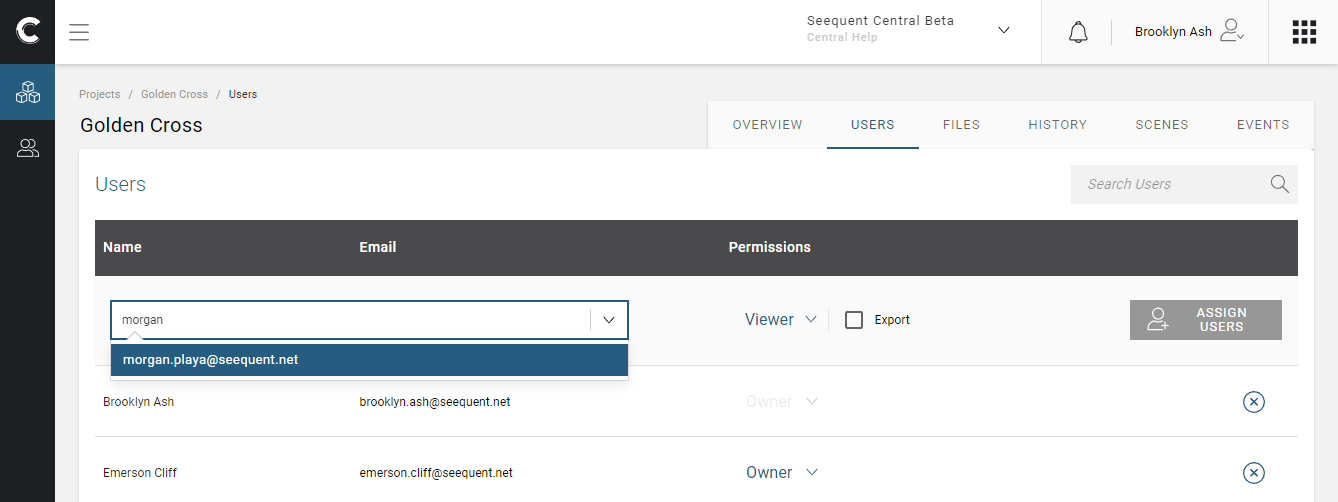
Next, you need to choose how much access the user will have.
There are four levels of project permissions in Central: Owner, Editor, Viewer+Export and Viewer.
An Owner can:
- Assign other users as the owner. A project can have more than one owner.
- Configure and add an integration to a project they own.
A user who uploads a new project to Central is automatically assigned as the project owner.
Editor access allows a user to work in a project in Leapfrog.
Viewer+Export and Viewer access allow a user to view scenes in the Central Portal, but they cannot edit scenes or add new ones.
Select which option you prefer. Give the user Viewer+Export access by ticking the Export box next to Viewer.
Removing Users From a Project
If you are a project owner, you can revoke a user’s project permissions. To do this, click on the Users tab for the project and click the button for the user you want to remove. You will be asked to confirm your choice.
Managing Project Revisions
To manage a project’s revisions, click on its History tab. The History list shows all revisions in a project, organised by branch:

Click on the node for a revision to view more information about it, including any comments made on that revision.

If you are the owner of a project, you will be able to delete a revision or delete Leapfrog data for a revision. You can view these options by holding your mouse cursor over a revision and then clicking on the overflow button ( ) that appears.
) that appears.
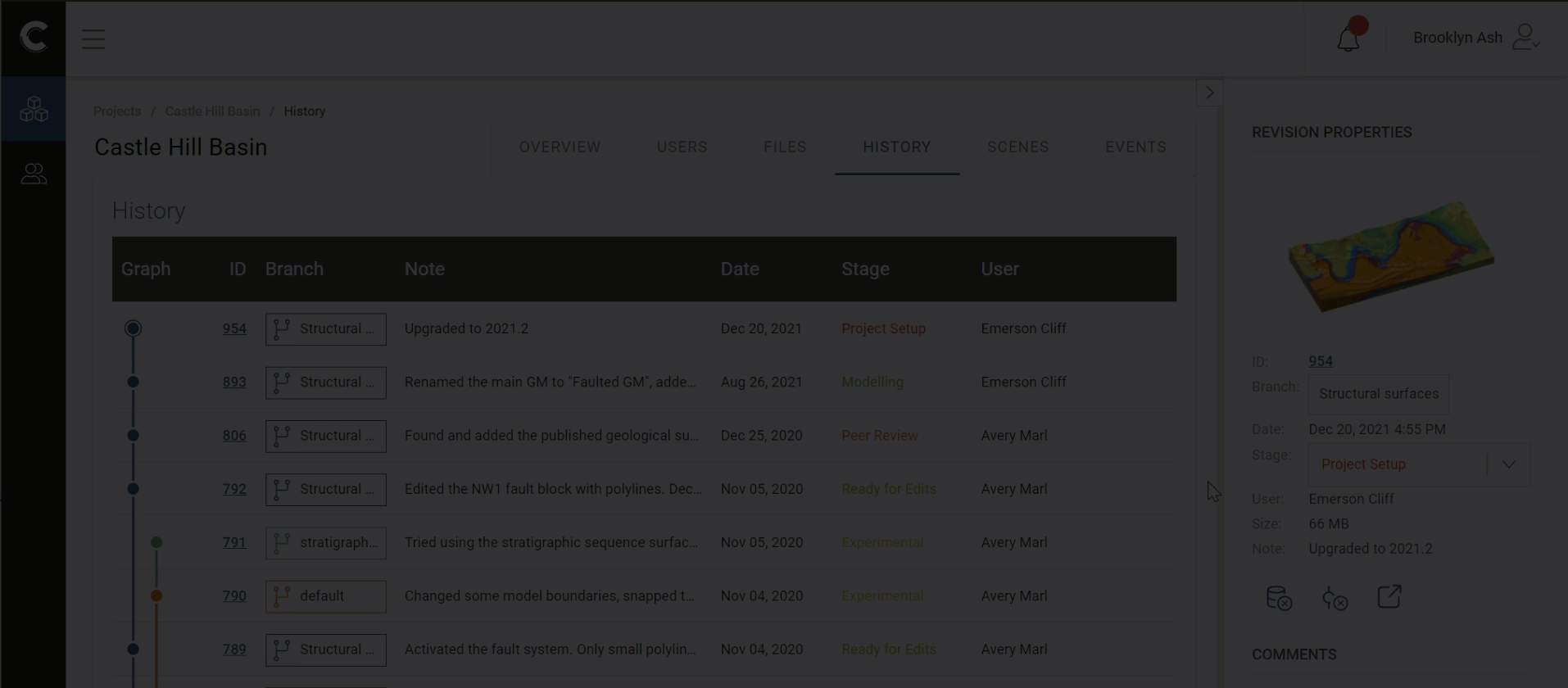
What options are available depends on whether or not the revision is the most recent on its branch and whether or not a Leapfrog project was published with the revision.
- The Delete Revision option is only available for the most recent revision on a branch. This option deletes both the revision data and its Leapfrog project, if one was published with the revision.
- The Delete Leapfrog data option deletes only the Leapfrog project, if one was published with the revision.
- The View revision option opens the revision in 3D. See Visualising Data in the Central Portal for more information.
Unlocking Locked Branches
When a Leapfrog user locks a branch, it is automatically set to expire within a short period of time. If you are the owner of a project, you can unlock a locked branch before the lock expires. To do this, select that project from the Projects list. In the History tab, you can see branches that are locked. You cannot unlock a branch from the Overview tab. To unlock the branch, click on the History tab, then select the revision that is locked. More information will be displayed, including the option to unlock the branch.
